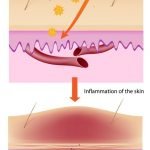Legalized Cannabis is Stronger Than What What is Studied For Pain Relief
Node Smith, ND
More than 90% of the legal marijuana products offered in medical dispensaries are much stronger than what clinical studies have shown that doctors recommend for chronic pain relief, according to a study published in the March 26 online edition of the journal PLOS ONE.
To many that may seem like a good thing, but just the opposite is true.
More than 90% of the legal marijuana products offered in medical dispensaries are much stronger than what clinical studies have shown that doctors recommend for chronic pain relief
“We know that high-potency products should not have a place in the medical realm because of the high risk of developing cannabis-use disorders, which are related to exposure to high THC-content products,” said the study’s lead author, Alfonso Edgar Romero-Sandoval, M.D., Ph.D., associate professor of anesthesiology at Wake Forest School of Medicine, part of Wake Forest Baptist Health.
“Several earlier studies showed that levels of up to 5% tetrahydrocannabinol (THC) — the main psychoactive compound in marijuana that provides pain relief as well as intoxication — were sufficient to reduce chronic pain with minimal side effects.”
Goal of this study
The goal of this study was to evaluate the advertised THC and CBD content of legal cannabis products to determine their suitability for medicinal use, and to compare the potency of the products offered in medical and recreational programs.
The researchers recorded the concentrations of THC and cannabidiol (CBD) — the non-euphoric compound in marijuana — in all plant cannabis products provided by legal dispensary websites and compared them between or within the states in the study: California, Colorado, Maine, Massachusetts, New Hampshire, New Mexico, Rhode Island, Vermont and Washington. A total of 8,505 cannabis products across 653 dispensaries were sampled.
Romero-Sandoval’s team found that most of the products offered in the medical dispensaries in the study had more than 10% THC and that many had 15% or more, the same as what is available in products at recreational dispensaries.
60% and 80% of people who use medical marijuana use it for pain relief
This is problematic because between 60% and 80% of people who use medical marijuana use it for pain relief, Romero-Sandoval said. The higher the concentration of THC the greater risk, not only for developing dependency, but also for developing tolerance more quickly, which means higher and higher concentrations might be needed to get the same level of pain relief.
‘Study provides scientific evidence to help policy makers correct mistakes and create a better framework to protect patients’
“It can become a vicious cycle,” Romero-Sandoval said.
“Better regulation of the potency of medical marijuana products is critical. The FDA regulates the level of over-the-counter pain medications such as ibuprofen that have dose-specific side effects, so why don’t we have policies and regulations for cannabis, something that is far more dangerous?”
This study provides the scientific evidence to help policy makers correct mistakes and to create a better framework to protect patients, he said.
This study was funded by the Department of Anesthesiology at Wake Forest Baptist Health.
- Mary Catherine Cash, Katharine Cunnane, Chuyin Fan, E. Alfonso Romero-Sandoval. Mapping cannabis potency in medical and recreational programs in the United States. PLOS ONE, 2020; 15 (3): e0230167 DOI: 10.1371/journal.pone.0230167

Node Smith, ND, is a naturopathic physician in Humboldt, Saskatchewan and associate editor and continuing education director for NDNR. His mission is serving relationships that support the process of transformation, and that ultimately lead to healthier people, businesses and communities. His primary therapeutic tools include counselling, homeopathy, diet and the use of cold water combined with exercise. Node considers health to be a reflection of the relationships a person or a business has with themselves, with God and with those around them. In order to cure disease and to heal, these relationships must be specifically considered. Node has worked intimately with many groups and organizations within the naturopathic profession, and helped found the non-profit, Association for Naturopathic Revitalization (ANR), which works to promote and facilitate experiential education in vitalism.









